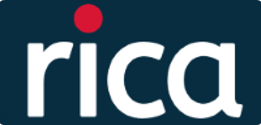Strengthening student literacy: a didactic sequence using digital technologies
Keywords:
literacy, writing, traffic, didactic sequenceAbstract
This article is aimed to present a pedagogical proposal for school support classes in the literacy of students of different levels of reading and writing learning (pre-syllabic, syllabic and syllabic-alphabetic). It is the creation of a Didactic Sequence (SD) that brings as practice the use of digital technologies (digital notebook on tablets) in literacy, having as a theme the awareness of the importance of traffic rules, from the understanding of the symbolic elements that constitute them. It is noticed the importance to develop behavioral skills in transit, on all different roles: pedestrian, cyclist, motorcyclist, driver, among others, which justifies a pedagogical strategy to choose the theme of SD Transit, with the goal of contributing to the support in the literacy process of students in the age group ranging from six to twelve years old.
References
ALMEIDA, M.E.B. de; SILVA M. da G.M. da. Currículo, tecnologia e cultura digital: espaços e tempos da web currículo. Revista E-Curriculum, São Paulo, v.7, n.1, abr. 2011.
ARANTES, S.S.F. Reforço escolar em sociedade civil em prol da alfabetização: interface entre sequências didáticas e ferramentas digitais. 2019. (Mestrado Profissional em Novas Tecnologias Digitais na Educação) Centro Universitário Carioca, Rio de Janeiro 2019.
BRASIL. Ministério da Educação (2017). Base Nacional Comum Curricular – Documento final. MEC. Brasília, DF.
CAGLIARI, L.C. Alfabetizando sem o Bá-Bé-Bi-Bó-Bú: Pensamento e Ação no Magistério. 1. Ed. São Paulo: Scipione, 1998.
CAVALCANTI, M. R.S; RIBEIRO, M. M.; BARRO, M. R. Planejamento de uma sequência didática sobre energia elétrica na perspectiva CTS. Ciênc. educ. (Bauru), Bauru, v. 24, n. 4, p. 859-874, Dec. 2018.
DEMO, Pedro. Leitores para sempre. Porto Alegre. 2 ed. Porto Alegre: Mediação, 2007.
EDUCAÇÃO & GENÉTICA. Educação: Trânsito. 27 de jul. de 2017. Disponível em:< https://www.youtube.com/watch?v=U5TlJtHTCtU>
FERREIRO, E.; TEBEROSKY, A. Psicogênese da língua escrita. Porto Alegre: Artes Médicas, 1985.
FIAT AUTOMÓVEIS BRASIL. Vacilão na rua não! Por uma Rua Melhor - Pereira | FIAT. Disponível em: <https://www.youtube.com/watch?v=IYRBjljah2k&feature=youtu.be>
GOMES, E. Clip trânsito educativo - Enes Gomes produções. 15 de out de 2009. Disponível em: <https://www.youtube.com/watch?v=Uhi0Mwwar_k>
IBAC, B. Detran RJ divulga dados sobre Vítimas do Trânsito. 06 dez. 2017. Disponível em <https://www.cursosdetransito.com.br/blog/2017/12/06/detran-rj-divulgadados-sobre-vitimas-do-transito/ >
LÉVY, P. As tecnologias da inteligência – o futuro do pensamento na era da informática. Rio de Janeiro: Ed 34, 1993.
MARCUSCHI, L. A. A oralidade e letramento. In: CASTANHEIRA et al (org). Da fala para a escrita: atividade de retextualização, 8ª ed. São Paulo: Cortez, 2007.
MORAN, J.M. Desafios na comunicação pessoal. 3º. Ed. São Paulo: Paulinas, 2007.
MORAN, J.M. Mudar a forma de ensinar e de aprender com tecnologia. In. MORAN, J.M.; MASETTO, M.; BEHRENS, M. Novas tecnologias e mediações. 16. ed. Campinas: Papirus, 2009, p. 11-65.
NETO, P. S. Telas que ensinam – mídia e aprendizagem: do cinema ao computador. Campinas: Alínea, 2001.
OLIVEIRA, F.M.; HILDEBRAND, H.R. Ludicidade, Ensino e Aprendizagem nos Jogos Digitais educacionais. Informática na Educação: teoria & prática. Porto Alegre, v. 21, n 1, p. 106-120, jan/abr.2018
PRENSKY, M. Digital Natives, Digital Immigrants Part 1, On the Horizon, Vol 9 Issue: 5, pp 1-6. 2001.
STAREPRAVO, Ana Ruth. Ana Ruth Starepravo, em sua tese de doutorado defendida na Universidade de São Paulo (USP) sobre jogos nas aulas de Matemática.
SILVA, T. (Org.). Alfabetização no Brasil: questões e provocações da atualidade. Campinas, SP: Autores Associados, 2007. (Coleção Educação Contemporânea).
SOARES, M. Alfabetização e letramento, caminhos e descaminhos. Pátio, nº. 29. Ano VII, editora Artes Médicas Sul Ltda, 2004.
SOARES, M. “Alfabetização e letramento”. Caderno do Professor. Belo Horizonte, SEE/MG Centro de Referência do Professor. 2004, n.12, pp. 6-11.
TFOUNI, L. V. Letramento e alfabetização. 9. Ed. São Paulo: Cortez, 2010.
VILAS BOAS, V.A.P., VALLIN, C. Alfabetização de crianças utilizando recursos tecnológicos. Revista Eletrônica de Educação, v.7, n.2, 2013, p. 63-74.
VYGOTSKY, L. A formação social da mente: o desenvolvimento de processos psicológicos superiores. São Paulo: Martins Fontes, 1989.
ZABALA A. A prática educativa: como ensinar. Porto Alegre: Artmed 1998.
FRANÇA, L. Desafios e oportunidades da Base Nacional Comum Curricular (BNCC). Plataforma Educacional, 2018. Disponível em: https://www.somospar.com.br/desafios-e-oportunidades-da-base-nacionalcomum-curricular-bncc
Downloads
Published
How to Cite
Issue
Section
License
Copyright (c) 2021 Interdisciplinary Journal of Applied Science

This work is licensed under a Creative Commons Attribution-NonCommercial-NoDerivatives 4.0 International License.
Authors keep the copyright and cede to the journal the right of publishing first. Published works are licensed under a Creative Commons Attribution 4.0 International (CC BY 4.0) license, allowing the sharing of the work with recognition of the authorship and initial publication in this journal.






